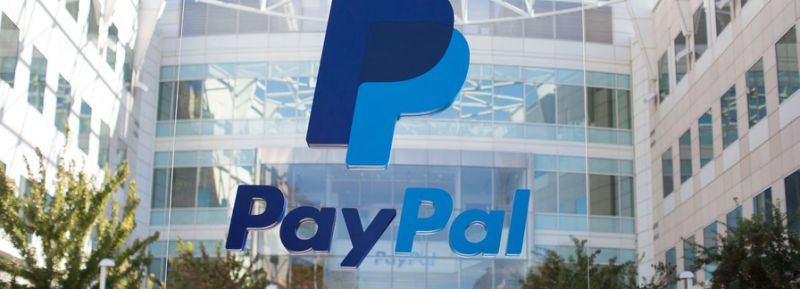
Understanding Return On Capital Employed (ROCE)
Just to clarify if you’re unsure, ROCE is a metric for evaluating how much pre-tax income (in percentage terms) a company earns on the capital invested in its business. Analysts use this formula to calculate it for PayPal Holdings:
<p class="canvas-atom canvas-text Mb(1.0em) Mb(0)–sm Mt(0.8em)–sm" type="text" content="Return on Capital Employed = Earnings Before Interest and Tax (EBIT) ÷ (Total Assets – Current Liabilities)” data-reactid=”31″>Return on Capital Employed = Earnings Before Interest and Tax (EBIT) ÷ (Total Assets – Current Liabilities)
<p class="canvas-atom canvas-text Mb(1.0em) Mb(0)–sm Mt(0.8em)–sm" type="text" content="0.099 = US$2.9b ÷ (US$63b – US$34b) (Based on the trailing twelve months to June 2020).” data-reactid=”36″>0.099 = US$2.9b ÷ (US$63b – US$34b) (Based on the trailing twelve months to June 2020).
<p class="canvas-atom canvas-text Mb(1.0em) Mb(0)–sm Mt(0.8em)–sm" type="text" content="So, PayPal Holdings has an ROCE of 9.9%. On its own that’s a low return on capital but it’s in line with the industry’s average returns of 10%.” data-reactid=”37″>So, PayPal Holdings has an ROCE of 9.9%. On its own that’s a low return on capital but it’s in line with the industry’s average returns of 10%.
<p class="canvas-atom canvas-text Mb(1.0em) Mb(0)–sm Mt(0.8em)–sm" type="text" content=" See our latest analysis for PayPal Holdings ” data-reactid=”38″>See our latest analysis for PayPal Holdings

<p class="canvas-atom canvas-text Mb(1.0em) Mb(0)–sm Mt(0.8em)–sm" type="text" content="In the above chart we have measured PayPal Holdings' prior ROCE against its prior performance, but the future is arguably more important. If you'd like, you can check out the forecasts from the analysts covering PayPal Holdings here for free.” data-reactid=”51″>In the above chart we have measured PayPal Holdings’ prior ROCE against its prior performance, but the future is arguably more important. If you’d like, you can check out the forecasts from the analysts covering PayPal Holdings here for free.
What Can We Tell From PayPal Holdings’ ROCE Trend?
The returns on capital haven’t changed much for PayPal Holdings in recent years. The company has consistently earned 9.9% for the last five years, and the capital employed within the business has risen 105% in that time. This poor ROCE doesn’t inspire confidence right now, and with the increase in capital employed, it’s evident that the business isn’t deploying the funds into high return investments.
On a side note, PayPal Holdings’ current liabilities are still rather high at 53% of total assets. This can bring about some risks because the company is basically operating with a rather large reliance on its suppliers or other sorts of short-term creditors. While it’s not necessarily a bad thing, it can be beneficial if this ratio is lower.
Our Take On PayPal Holdings’ ROCE
In conclusion, PayPal Holdings has been investing more capital into the business, but returns on that capital haven’t increased. Yet to long term shareholders the stock has gifted them an incredible 434% return in the last five years, so the market appears to be rosy about its future. However, unless these underlying trends turn more positive, we wouldn’t get our hopes up too high.
<p class="canvas-atom canvas-text Mb(1.0em) Mb(0)–sm Mt(0.8em)–sm" type="text" content="One more thing, we've spotted 2 warning signs facing PayPal Holdings that you might find interesting.” data-reactid=”57″>One more thing, we’ve spotted 2 warning signs facing PayPal Holdings that you might find interesting.
<p class="canvas-atom canvas-text Mb(1.0em) Mb(0)–sm Mt(0.8em)–sm" type="text" content="While PayPal Holdings isn't earning the highest return, check out this free list of companies that are earning high returns on equity with solid balance sheets.” data-reactid=”58″>While PayPal Holdings isn’t earning the highest return, check out this free list of companies that are earning high returns on equity with solid balance sheets.
<p class="canvas-atom canvas-text Mb(1.0em) Mb(0)–sm Mt(0.8em)–sm" type="text" content="This article by Simply Wall St is general in nature. It does not constitute a recommendation to buy or sell any stock, and does not take account of your objectives, or your financial situation. We aim to bring you long-term focused analysis driven by fundamental data. Note that our analysis may not factor in the latest price-sensitive company announcements or qualitative material. Simply Wall St has no position in any stocks mentioned.
Have feedback on this article? Concerned about the content? Get in touch with us directly. Alternatively, email [email protected].” data-reactid=”59″>This article by Simply Wall St is general in nature. It does not constitute a recommendation to buy or sell any stock, and does not take account of your objectives, or your financial situation. We aim to bring you long-term focused analysis driven by fundamental data. Note that our analysis may not factor in the latest price-sensitive company announcements or qualitative material. Simply Wall St has no position in any stocks mentioned.
Have feedback on this article? Concerned about the content? Get in touch with us directly. Alternatively, email [email protected].












Add Comment